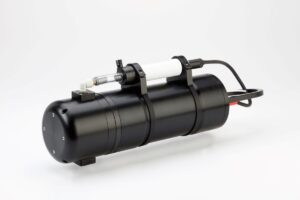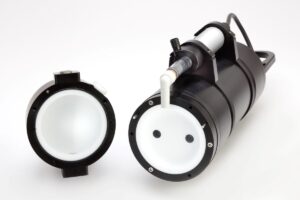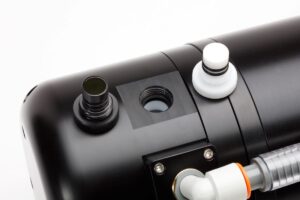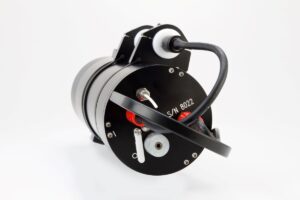In aquatic optics and phytoplankton ecology, chlorophyll-a has long been the go-to proxy for estimating biomass and productivity. However, as our understanding of aquatic ecosystems deepens, so does our need for more nuanced tools. One such tool is Sequoia’s hyperspectral absorption meter, the Hyper-a, measuring in situ absorption from 300 nm to 710 nm. This measurement offers a more detailed view of phytoplankton physiology, community structure, and environmental stress.
Why Go Beyond Chlorophyll-a?
The Chlorophyll-a pigment absorbs light primarily in the blue (~440 nm) and red (~675 nm) regions of the spectrum. However, phytoplankton communities contain a diverse array of accessory pigments such as:
- Fucoxanthin (diatoms)
- Peridinin (dinoflagellates)
- Phycocyanin and phycoerythrin (cyanobacteria)
- Alloxanthin (cryptophytes)
Each pigment has a distinct absorption signature, see figure. By capturing the full absorption spectrum, the aquatic scientist can infer the taxonomic composition and physiological state of phytoplankton populations.
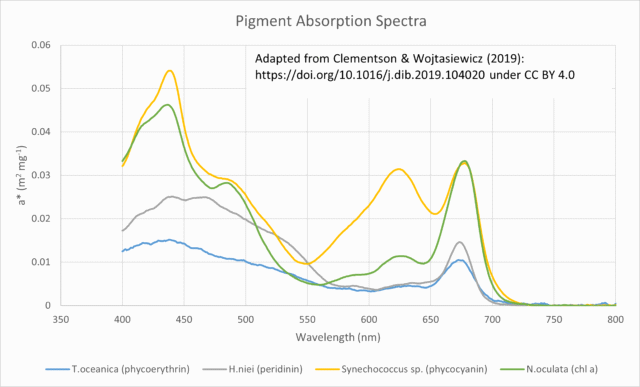
Pigment Absorption Spectra for select algae and their dominant pigments. Adapted from Clementson & Wojtasiewicz (2019): https://doi.org/10.1016/j.dib.2019.104020 under CC BY 4.0
Applications in Ocean Health Monitoring
- Nutrient Limitation and Stress Detection
Changes in pigment ratios—detectable through shifts in the absorption spectrum—can indicate nutrient stress. For example, under iron limitation, phytoplankton often reduce chlorophyll content while maintaining accessory pigments, altering the shape of the absorption spectrum. This has been observed in high-nutrient, low-chlorophyll (HNLC) regions like the Southern Ocean. - Community Composition and Succession
Spectral deconvolution techniques allow researchers to estimate the relative abundance of major phytoplankton groups. This is critical for understanding bloom dynamics, trophic interactions, and biogeochemical cycling. This has been observed in the North Pacific, where shifts from diatom-dominated to cyanobacteria-dominated communities during stratified summer months are detectable through changes in absorption peaks around 490–550 nm. - Carbon Cycling and Productivity Models
Accurate absorption spectra improve estimates of the specific absorption coefficient of phytoplankton (a*), a key parameter in models of primary production. This leads to better predictions of carbon fluxes and aquatic ecosystem responses to climate change.
A Spectrum of Possibilities
Sequoia’s Hyper-a in situ hyperspectral absorption meter is user friendly and require no difficult calibration procedures. It provides high-resolution spectral absorption data, enabling highly detailed monitoring of phytoplankton optical properties. With the Hyper-a absorption measurements biogeochemists, phytoplankton ecologists, limnologists and oceanographers have a powerful tool to observe and understand the subtle, dynamic processes shaping and changing aquatic ecosystems. Finally, hyperspectral absorption instruments such as the Hyper-a are needed to keep up with new hyperspectral ocean color satellites (e.g., PACE). In-situ hyperspectral absorption will aid in ground-truthing and algorithm development for the next generation of satellites.
- Hyper-a full view
- Hyper-a integrating sphere halves
- Hyper-a close-up of ND and std plug
- Hyper-a endcap
